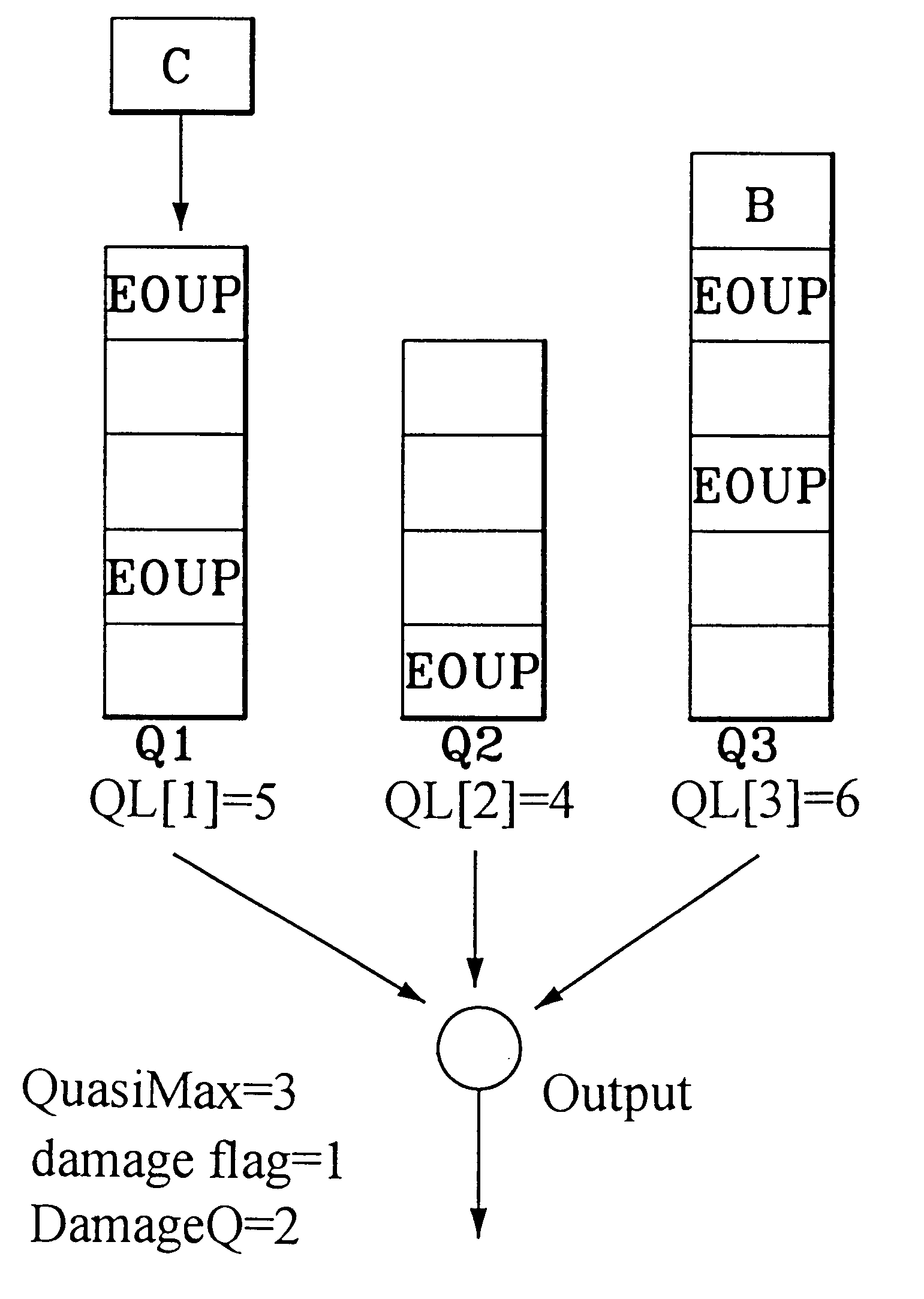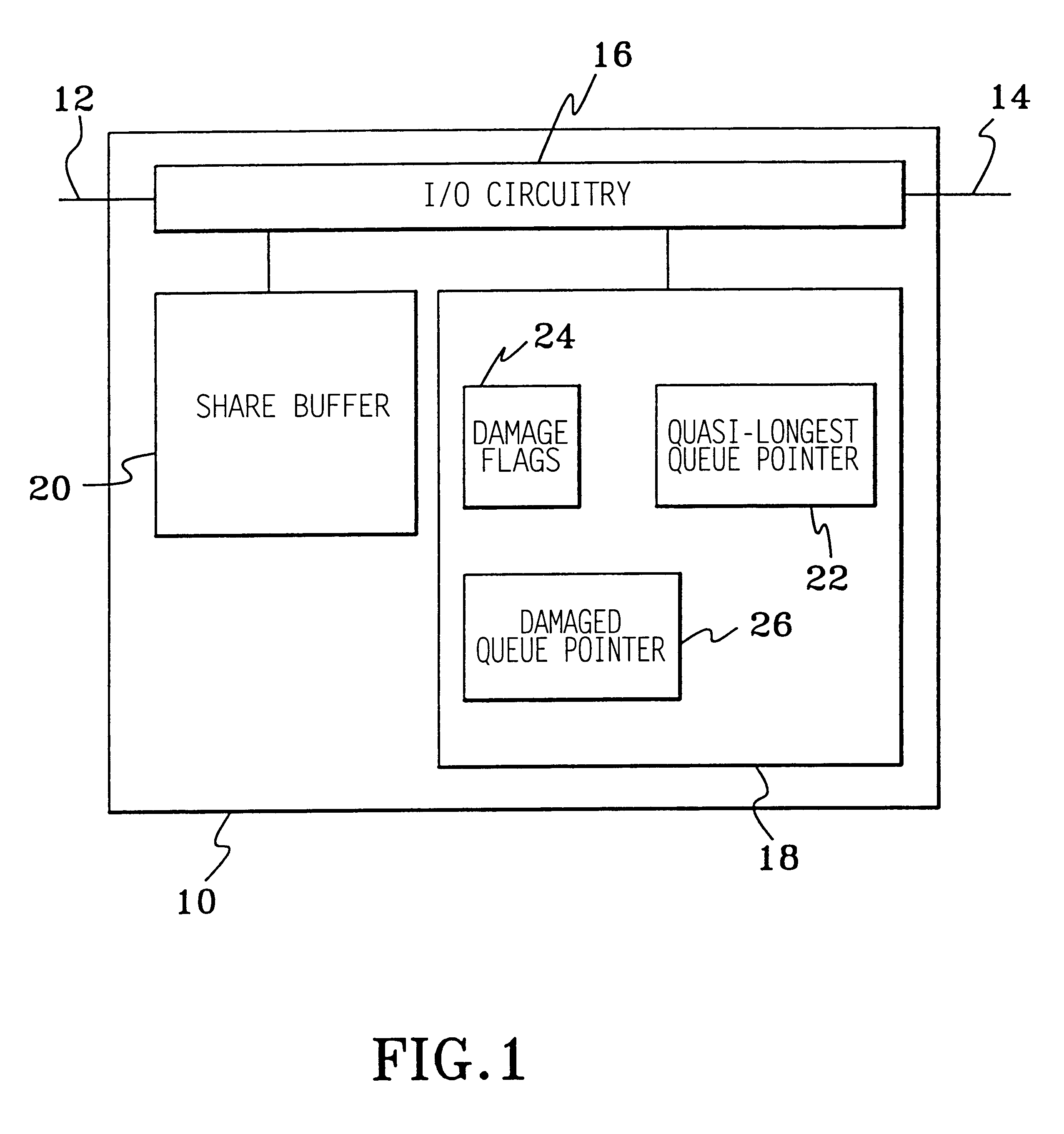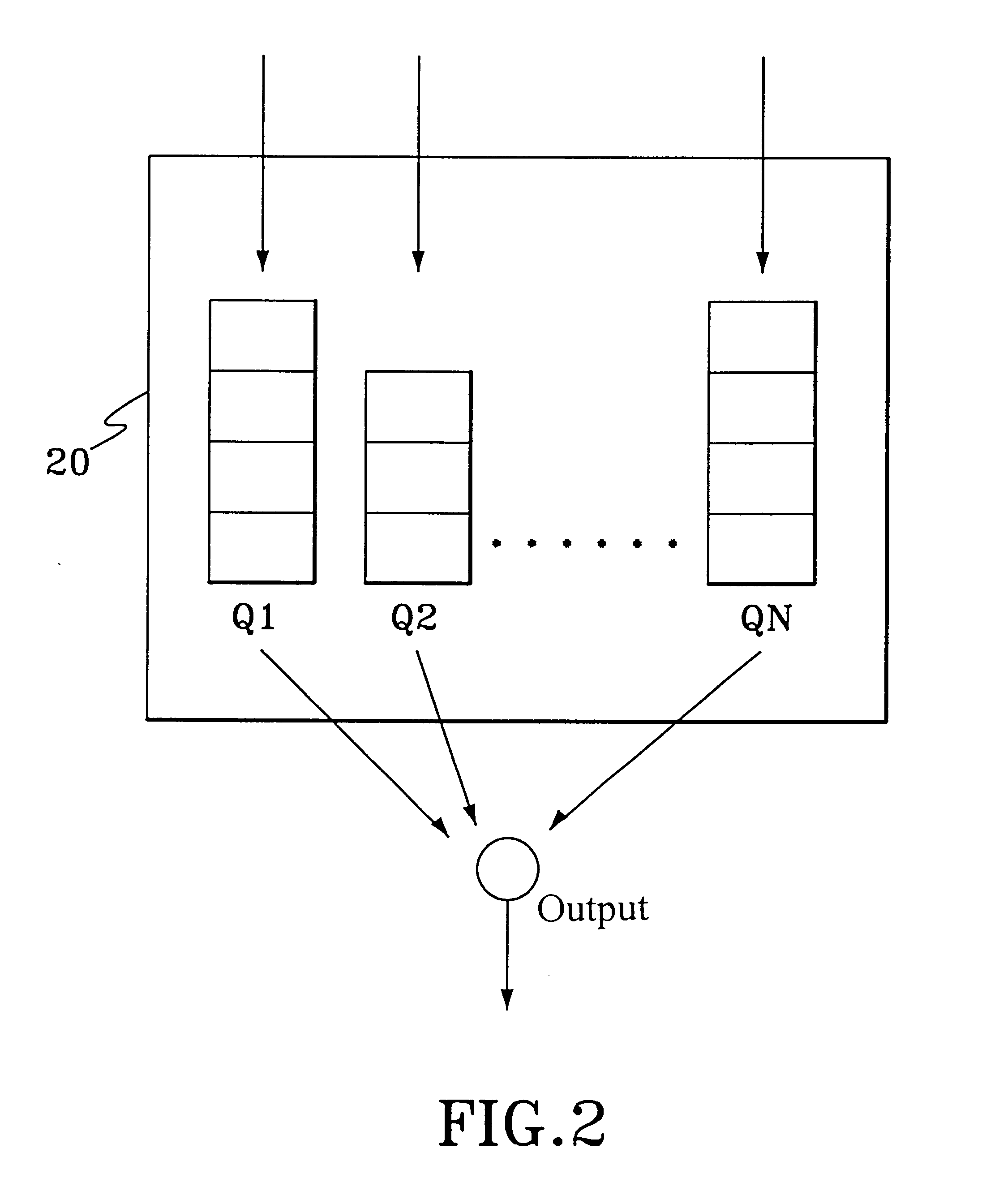Quasi-pushout method associated with upper-layer packet discarding control for packet communication systems with shared buffer memory
a packet communication system and buffer memory technology, applied in the field of packet communication networks, can solve the problems of bottlenecks in practical implementation, difficult pushout,
- Summary
- Abstract
- Description
- Claims
- Application Information
AI Technical Summary
Benefits of technology
Problems solved by technology
Method used
Image
Examples
Embodiment Construction
In a packet communication system, "packet" refers to a unit of data segment encapsulated with identification information. The size of packets in a specific system may be fixed (e.g. ATM) or variable within a range (e.g. Ethernet).
The described embodiment is a fixed-size packet switch with multi-input and multi-output ports, for example, an ATM switch. In different embodiments, the present invention can be applied for multi-input / single-output system, such as a multiplexer, or single-input / multi-output system, such as a demultiplexer. The present invention can also be applied in other embodiments with fixed or variable length packets.
Referring to FIG. 1, the packet communication module 10 is connected to single or multiple input ports 12, from which the module 10 receives packets. The packet communication module 10 is also connected to a single or multiple output ports 14 for transmitting switched packets. Input ports 12 and output ports 14 are connected to the input / output circuitry...
PUM
 Login to View More
Login to View More Abstract
Description
Claims
Application Information
 Login to View More
Login to View More - R&D
- Intellectual Property
- Life Sciences
- Materials
- Tech Scout
- Unparalleled Data Quality
- Higher Quality Content
- 60% Fewer Hallucinations
Browse by: Latest US Patents, China's latest patents, Technical Efficacy Thesaurus, Application Domain, Technology Topic, Popular Technical Reports.
© 2025 PatSnap. All rights reserved.Legal|Privacy policy|Modern Slavery Act Transparency Statement|Sitemap|About US| Contact US: help@patsnap.com



